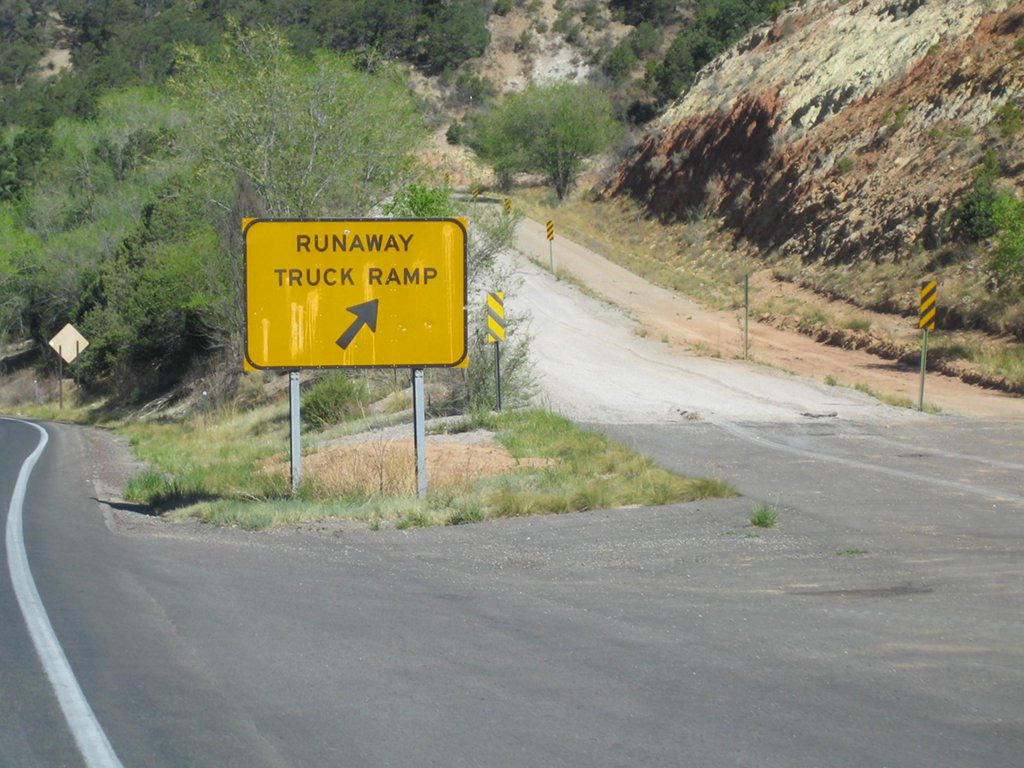Types of Runaway Truck Ramps
Posted August 22, 2016 by admin Types of Runaway Truck Ramps
Types of Runaway Truck Ramps
Have you seen those dirt exit ramps, usually, at the bottom of a hill on an interstate or highway? They are called “runaway truck ramps”. These exits assist vehicles—large trucks and buses—to safely stop, usually when there are braking problems. The ramps work by allowing the kinetic energy of a massive vehicle to dissipate by deceleration or kinetic energy transfer.
When brakes go out, disastrous or even deadly results happen, especially when driving down a steep incline. However, these dirt ramps are not the only types of runaway truck ramps that assist in slowing down a runaway truck. It is important for a trained driver to know the types of runaway truck ramps.
Here are the types of emergency truck ramps that you should be aware of:
Arrester Beds
Arrester beds are graveled filled ramps that use rolling resistance to stop a vehicle. When these ramps should be used is dependent on the mass and speed of the vehicle, the grade of the bed, and the rolling resistance of the gravel.
Gravity escape ramps
These are the most common types of emergency truck ramps that you will find at the bottom of a steep-graded decline. The deceleration of a runaway truck is relied upon a heavily-inclined path that runs parallel to the road. Problems of these ramps include rollback after the vehicle decelerates and the possibly overturning afterwards.
Sand pile escape ramps
Loosely piled sand and dirt moguls assist a runaway vehicle by transferring the moving energy into the ground, leading to a very turbulent deceleration. Problems of these ramps include vaulting and overturning after a vehicle’s initial contact of the moguls, and failure due to weather-based variables (freezing, moisture, etc.)
Mechanical-arrestor ramps
These proprietary ramps are designed to stop a runaway vehicle using a series of mechanical energy-absorbing spools and stainless steel nets. These nets are connected to spooled-tape energy absorbers mounted in precast concrete barriers. These ramps are designed to even slow down a runaway vehicle, traveling at its legal maximum weight at 60 MPH.
What Can You Do To Prevent From Using A Emergency Ramp
It is important to have your brakes checked and serviced regularly, not just for you but also for your wallet. Using these exits may reduce the likelihood of disaster, however using them can have lasting consequences on your springs and suspension. Your truck was designed to be on the road, not bumpy sand and gravel, steep inclines or all 3. These emergency exits were designed to save lives, not your truck.
If you believe that your suspension is weak or wearing out, notify your fleet manager and visit the professionals at Smith Springs. With 3 convenient locations (link to locations page) for emergency truck repair in central, Ohio, you’re never too far from same-day service. And if you have used an emergency exit ramp recently, you must get your suspension checked as well.
At Smith Springs, we keep you moving safely on the road. If your truck is in need of suspension service, spring repair or replacement, contact us today to set up a service appointment. We’ll have you back on the road same-day guaranteed!